January 23, 2019
In the world of Arctic animals
The high Arctic is the name given to the northernmost archipelago of Russia, the land of Franz Josef. The discovery of these lands is due to chance:
In 1873, a polar expedition led by Karl Weiprecht and Julius Payer explored the northeastern sea route to the Pacific ocean. Their steamer, the Tegethoff, was heading for Novaya Zemlya. But the expedition was unsuccessful - the Northern ice blocked its path. The ship was forced to drift for more than a year. When there was no hope of rescue, the astonished team was presented with an amazing sight - "a glittering mountain country with icy rocks" - as described by Julius payer. Thus was discovered the land named after the Emperor of Hungary, Kaiser Franz Joseph-l.
In 1914, the expedition of Iskhak Islyamov raised the Russian flag on the archipelago - the land of Franz Josef was recognized as the territory of Russia.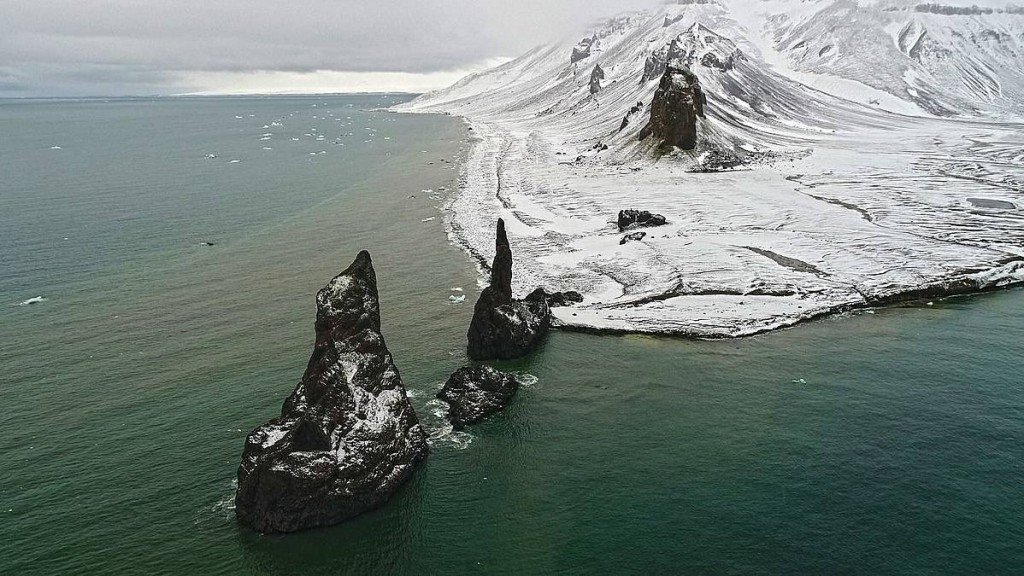
The archipelago includes the island 191. This is one of the most inaccessible places on Earth. To this day, being untouched by man, it has preserved its primeval nature.
Franz Josef lands belong to the northernmost of the natural zones - the Arctic desert. In winter, the temperature reaches -60 degrees Celsius. In summer, the maximum temperature is +3. In such a harsh climate, there is almost no vegetation – only mosses and lichens.
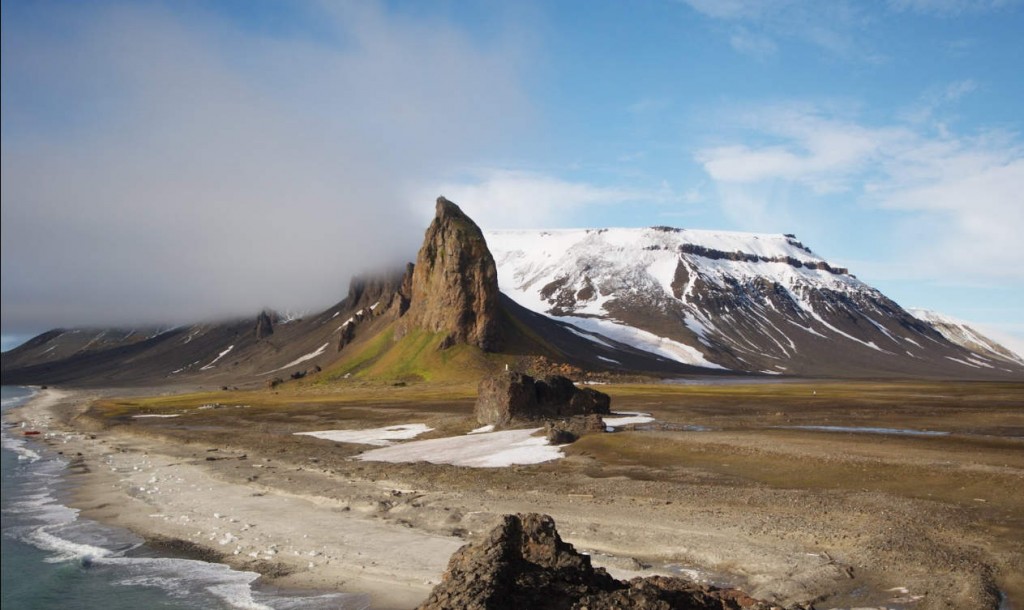
The animal world of the archipelago is more diverse.
Spring arrives a lot of birds - may day, guillemots, murres, ivory gull. The scale of their bird markets is impressive.
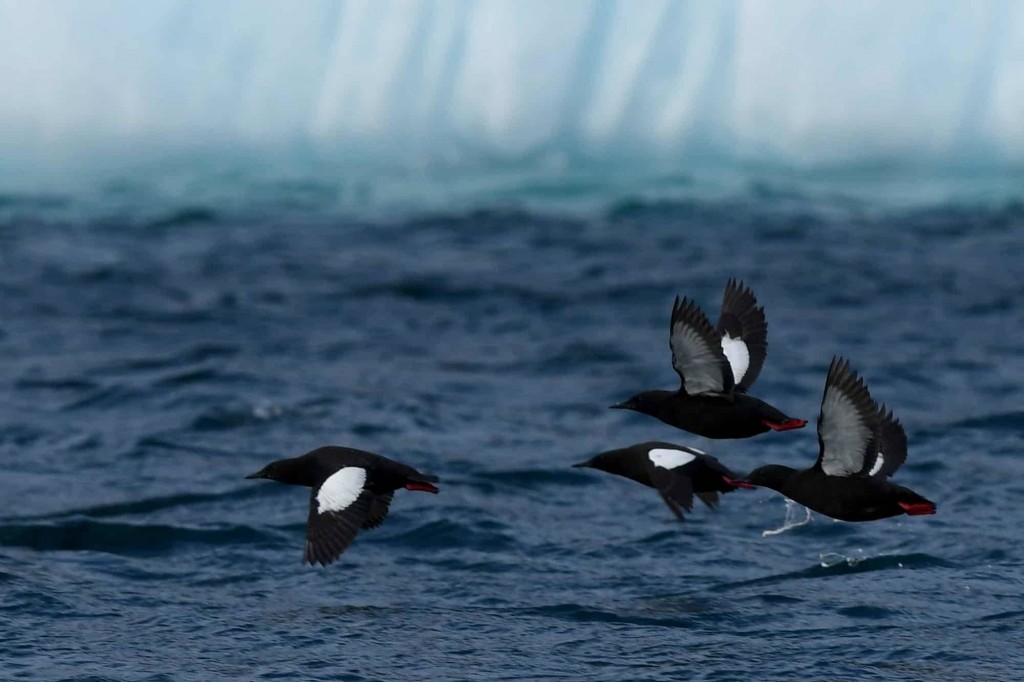
Polar bears are the masters of the local fauna. Having an impressive size, these animals move very quickly on land, and in the water they deftly dive and swim. Their wool, dense and dense, reliably protects from getting wet and frosts. Incredibly developed hearing and vision-the animal will smell its prey for many kilometers. Polar bears prey primarily on seals and walruses. They usually eat only fat and skin and, only in case of severe hunger, can eat the rest of the carcass.
The polar bear is listed in the Red Book of Russia.
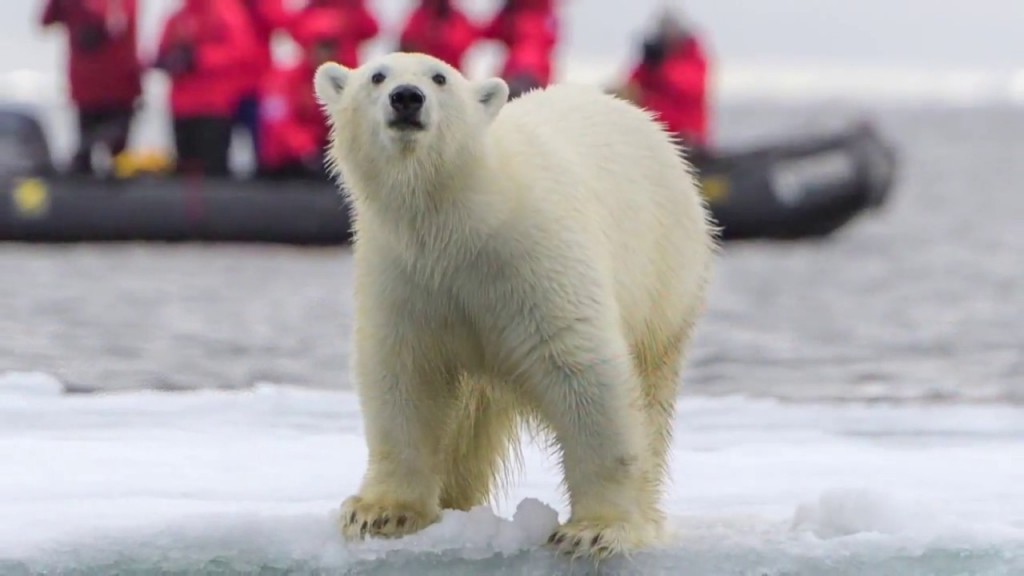
Walrus - these are the giants of the ocean, on land very awkward. They live in a herd and are very sociable. They fearlessly protect each other - the injured walrus will come to the aid of the entire herd. Walruses feed mainly on shellfish, sometimes they eat fish. Ice floes are usually chosen for recreation. At the same time, they always set sentries. In case of danger, the sentries will warn the others with a loud roar, and if necessary, they will rouse the sound sleepers.
All members of the herd help the walruses. If the cub gets tired of swimming, it can safely climb on the back of any of the adults and rest. Mutual assistance is characteristic of these thick-skinned animals.
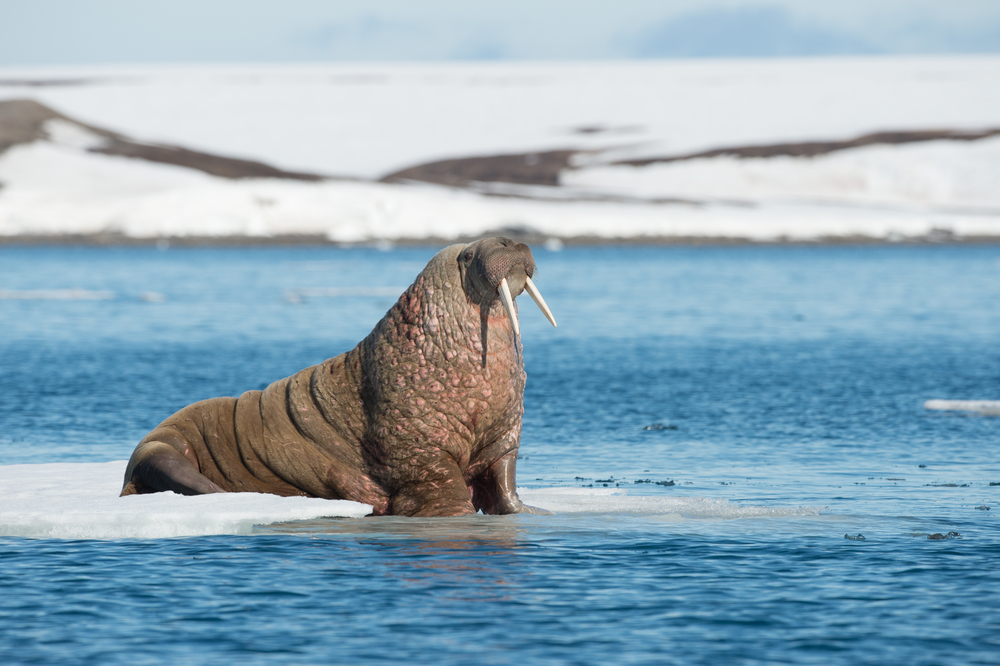
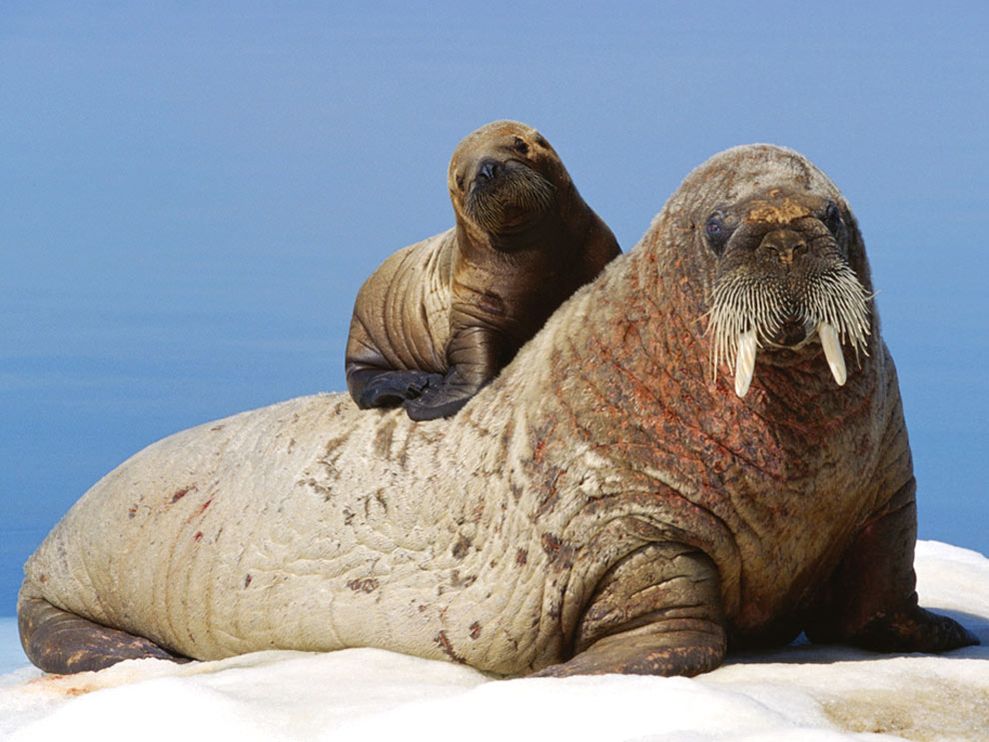
Seals, as well as walruses, are gregarious animals. Such slow - moving swimmers on land and in water. Their subcutaneous fat allows you to stay on the surface of the water even during sleep. Seals have weak eyesight, but they can hear very well. They are shy, which is understandable - they have too many enemies.
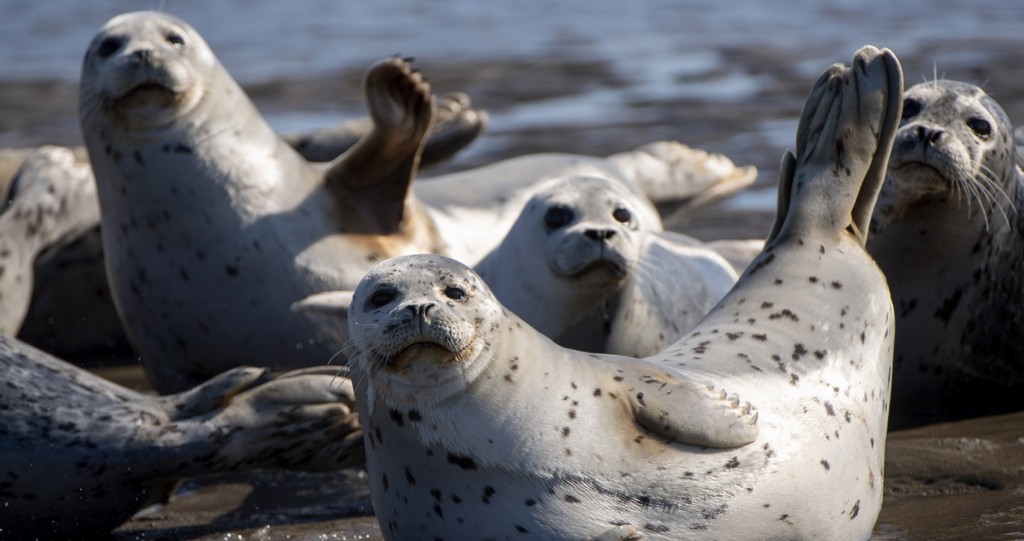
Giants of the Northern waters-Greenland whales. Observation of them is complicated due to the harsh conditions of their habitat. The length of the Greenland whale reaches 22 meters, and the weight is 150 tons. The whale can dive to a depth of 200 meters and stay underwater for up to 40 minutes. Whales don't like to be among the ice, so they migrate South in the fall. They feed exclusively on plankton, which the adult consumes up to 1.8 tons daily. Whales can be called centenarians - their life expectancy reaches up to 200 years.
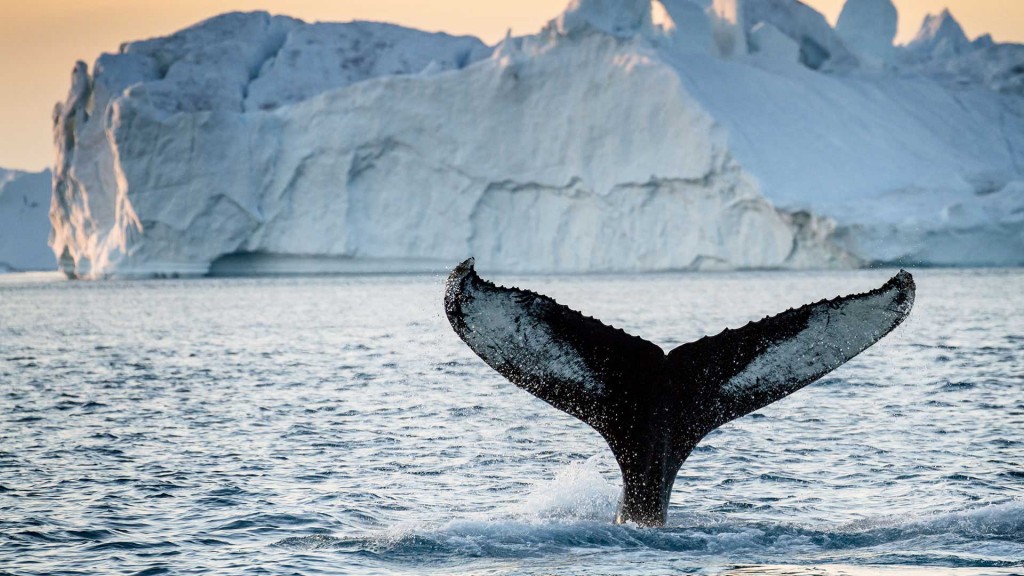
Little-known attracts. Therefore, sometimes tourists come to Franz Josef Land. This trip is not cheap. But the remoteness of the Arctic latitudes and the endless mystery attract travelers from year to year to this realm of desert glaciers and endless snow.
Author: Lyudmila Zhlobich
In 1873, a polar expedition led by Karl Weiprecht and Julius Payer explored the northeastern sea route to the Pacific ocean. Their steamer, the Tegethoff, was heading for Novaya Zemlya. But the expedition was unsuccessful - the Northern ice blocked its path. The ship was forced to drift for more than a year. When there was no hope of rescue, the astonished team was presented with an amazing sight - "a glittering mountain country with icy rocks" - as described by Julius payer. Thus was discovered the land named after the Emperor of Hungary, Kaiser Franz Joseph-l.
In 1914, the expedition of Iskhak Islyamov raised the Russian flag on the archipelago - the land of Franz Josef was recognized as the territory of Russia.

The archipelago includes the island 191. This is one of the most inaccessible places on Earth. To this day, being untouched by man, it has preserved its primeval nature.
Franz Josef lands belong to the northernmost of the natural zones - the Arctic desert. In winter, the temperature reaches -60 degrees Celsius. In summer, the maximum temperature is +3. In such a harsh climate, there is almost no vegetation – only mosses and lichens.

The animal world of the archipelago is more diverse.
Spring arrives a lot of birds - may day, guillemots, murres, ivory gull. The scale of their bird markets is impressive.

Polar bears are the masters of the local fauna. Having an impressive size, these animals move very quickly on land, and in the water they deftly dive and swim. Their wool, dense and dense, reliably protects from getting wet and frosts. Incredibly developed hearing and vision-the animal will smell its prey for many kilometers. Polar bears prey primarily on seals and walruses. They usually eat only fat and skin and, only in case of severe hunger, can eat the rest of the carcass.
The polar bear is listed in the Red Book of Russia.

Walrus - these are the giants of the ocean, on land very awkward. They live in a herd and are very sociable. They fearlessly protect each other - the injured walrus will come to the aid of the entire herd. Walruses feed mainly on shellfish, sometimes they eat fish. Ice floes are usually chosen for recreation. At the same time, they always set sentries. In case of danger, the sentries will warn the others with a loud roar, and if necessary, they will rouse the sound sleepers.
All members of the herd help the walruses. If the cub gets tired of swimming, it can safely climb on the back of any of the adults and rest. Mutual assistance is characteristic of these thick-skinned animals.


Seals, as well as walruses, are gregarious animals. Such slow - moving swimmers on land and in water. Their subcutaneous fat allows you to stay on the surface of the water even during sleep. Seals have weak eyesight, but they can hear very well. They are shy, which is understandable - they have too many enemies.

Giants of the Northern waters-Greenland whales. Observation of them is complicated due to the harsh conditions of their habitat. The length of the Greenland whale reaches 22 meters, and the weight is 150 tons. The whale can dive to a depth of 200 meters and stay underwater for up to 40 minutes. Whales don't like to be among the ice, so they migrate South in the fall. They feed exclusively on plankton, which the adult consumes up to 1.8 tons daily. Whales can be called centenarians - their life expectancy reaches up to 200 years.

Little-known attracts. Therefore, sometimes tourists come to Franz Josef Land. This trip is not cheap. But the remoteness of the Arctic latitudes and the endless mystery attract travelers from year to year to this realm of desert glaciers and endless snow.
Author: Lyudmila Zhlobich
Read more
July 31, 2024
April 12, 2024
April 5, 2024